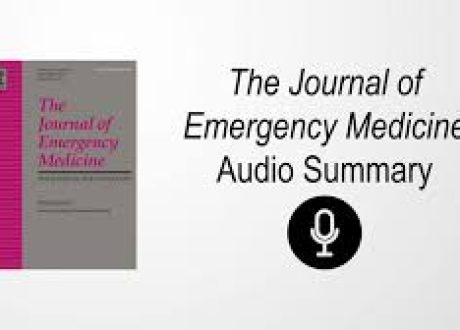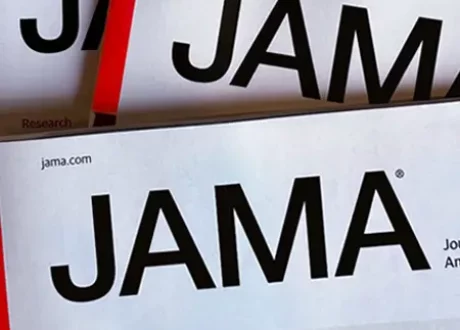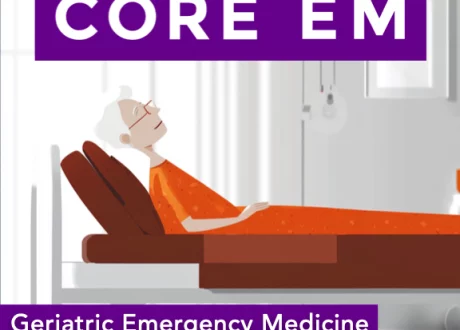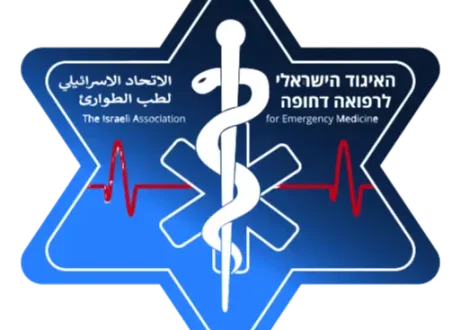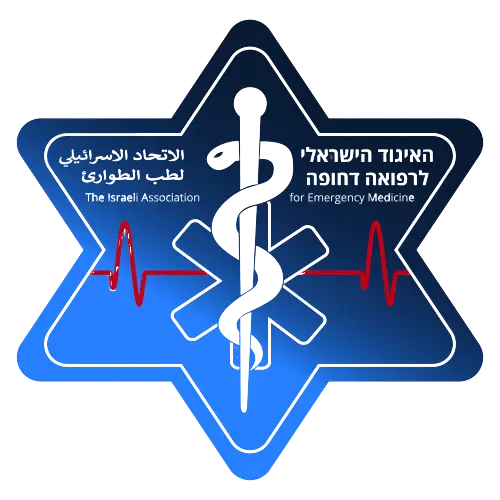Podcast: Play in new window | Download
“This learning material is sourced from Emergency Medicine Cases and has been published here with permission as per creative commons copyright”
Massive hemorrhage is one of the most time-critical, high-stakes scenarios in Emergency Medicine. Every minute matters. Every decision counts. But more blood is not always better—what saves lives is systematic, team-based, goal-directed care. In this update to the 7 T’s of Massive Hemorrhage Protocols with Dr. Jeannie Callum and Dr. Andrew Petrosoniak, we explore the most current, evidence-informed strategies for bleeding patients, from polytrauma to obstetrical, drawing on the latest clinical trial data, provincial MHP 2.0 rollouts, and real-world experience. We answer the questions: What is the evidence based alternative to FFP in EDs where FFP is not readily available? How accurate are decision scores in helping decide the trigger for MHP activation? Why is testing fibrinogen levels and giving fibrinogen concentrates so important in massive hemorrhage? How should we tailor our MHP to the GI bleed patient? To the obstetrical patient? and many more….
Podcast production, sound design & editing by Anton Helman; Voice editing by Braedon Paul
Written Summary and blog post by Matthew McArther, edited by Anton Helman August, 2025
Cite this podcast as: Helman, A. Callum, J. Petrosoniak, A. Massive Hemorrhage Protocols 2.0 – Update on the 7 Ts. Emergency Medicine Cases. August, 2025. https://emergencymedicinecases.com/massive-hemorrhage-protocols-2-0/. Accessed August 5, 2025
Massive Hemorrhage Protocols: 2025 Update on the 7 T’s
Summary Table: The 7 T’s of MHP 2.0
| T | Key Principle | 2025 Update |
|---|---|---|
| Trigger | When to activate the MHP | Delayed activation is OK. Default to 2–3 RBCs first, then reassess. Use “ABC after 3” approach. |
| Team | Roles, leadership, communication | Set resus targets early. Assign blood product flow to team members. Use shared mental models. |
| Testing | Labs & frequency | Hourly labs: CBC, INR, fibrinogen, calcium, lactate. Don’t forget fibrinogen. |
| TXA | Tranexamic acid use | Trauma: 2g early. PPH: 1g then repeat. GI: avoid—can cause harm. |
| Temperature | Avoid hypothermia | Warm blankets + prehospital warm-up. Every 1°C drop ↑ transfusion needs by 20%. |
| Targets | Lab thresholds | Hb >70 g/L, INR <1.8, Plt >50 (or >100 in ICH), Fibrinogen >1.5–2. |
| Termination | When to stop MHP | Reassess every 30 min. Avoid premature deactivation. ICU vigilance post-MHP. |
1. Trigger – When to Activate the MHP
Key Concept: Critical Administration Threshold for MHP activation
Determining when to activate MHP can be challenging. Overactivating MHP can cause harm by clogging up hospital resources as well as adverse sequelae from overtreatment. But even small delays in transfusing critically bleeding patients is associated with increased mortality. Rather than calling an MHP immediately based on EMS report or on arrival in the ED, our experts suggest a critical administration threshold approach to MHP.
In general, the literature suggests there is little downside to giving a 2-3 units of RBCs up front, so have RBCs ready for any patient who has hypotension in the field with a concerning mechanism, or any other suspicion of hemorrhagic shock. Once the patient arrives and you begin your primary survey, have a low threshold to administer those first 1-3 units if you are still concerned for hemorrhagic shock. In trauma, this strategy aligns with observational evidence that early red cell transfusion improves outcomes while minimizing premature plasma exposure.
Predicting upfront which bleeding patients will go on to need massive transfusion is challenging. Even our best clinical scoring tools are only 60-80% accurate. Trauma scores such as the Assessment of Blood Consumption (ABC), Shock Index, Revised Assessment of Bleeding and Transfusion score (RABT) and Resuscitation Intensity (RI) have been used to predict need for MHP. However, their sensitivity and specificity are modest. Instead, seeing how a patient responds after those first few units during the initial resuscitation will be most useful for you to decide when to activate MHP.
MHP Mnemonic: “Easy as ABC After 3”
It is useful to conceptualize the MHP as a “full court press” for patients with massive hemorrhage, designed to:
- Mobilize blood products quickly,
- Monitor and correct coagulopathy, and
- Facilitate definitive hemostasis
Dr. Andrew Petrosoniak proposes a two-step decision-making model: first, administer two or three units of uncrossmatched red cells to the bleeding patient. Then, reassess. This “ABC after 3” rule—standing for “Activate MHP, Balance products, Consider calcium and concentrates (fibrinogen)”—anchors the transition point between supportive transfusion and full protocol activation. If, after three RBCs, the patient remains unstable, coagulopathic, or is likely to require operative or angiographic intervention, then activation is warranted.
Ask three questions after 3 units RBCs (the “ABC after 3” rule):
- Will they need 4+ units?
- Are they coagulopathic?
- Do they need definitive hemostasis (e.g., OR or IR)?
Updated MHP Triggers by Bleed Type
Most of the evidence around MHP activation is in trauma. But not all bleeding patients share the same physiology: what about other causes of hemorrhagic shock?
Importantly, bleeding patients differ in fundamental ways depending on etiology. Trauma-induced coagulopathy occurs in approximately 25% of trauma patients and arises from complex endothelial dysfunction and fibrinolysis. In contrast, gastrointestinal bleeds—particularly variceal bleeds—typically involve a paradoxical mix of hypercoagulability and active bleeding. Postpartum hemorrhage, on the other hand, is most often caused by uterine atony, with hypofibrinogenemia as a late and ominous sign.
Accordingly, thresholds for MHP activation must be tailored. In trauma, early red cells followed by reassessment offers a reasonable approach. In GI bleeding, full activation is rarely needed, with only 5% of patients requiring more than red cells alone, and FFP may even be harmful. In contrast, obstetric hemorrhage demands a low threshold for activation. With blood flow to the gravid uterus at term reaching 1.5L/min, complete exsanguination can occur in minutes. Thus, any signs of instability in postpartum patients should prompt immediate protocol initiation.
MHP Trigger in GI Bleed
These patients have very different physiology than bleeding trauma patients and rarely need MHP activation. A combination of crystalloid volume resuscitation and red cell transfusions to a hemoglobin target of 70-80mg/dL should be adequate for the vast majority of patients with variceal bleeds (Baveno VII consensus guidelines). Activating consultants early for endoscopic management is key. Giving plasma, as in MHP protocols, could increase portal venous pressures and increase bleeding.
Pitfall: Do not trust the INR in cirrhotic patients. These patients have alterations in both pro-thrombotic and anti-thrombotic protein synthesis, so they may have an overall pro-thrombotic state despite having an elevated INR. Focus your management on resuscitation, decreasing portal pressures, and hemorrhage source control, rather than trying to correct coagulopathy. TXA has been shown to increase thrombotic complications in these patients with no mortality benefit (HALT-IT trial).
MHP Trigger in Obstetrical Patients
Because of the high uterine blood flow of 1.5L/min of pregnancy, these patients have the potential to exsanguinate rapidly. Have a very low threshold to activate MHP for any post partum hemorrhage (PPH) patient who is showing signs of hemorrhagic shock in order to mobilize blood products quickly. Rapid source control of uterine atony, with medications and operative management if needed, is critical for these patients.
The first “T,” trigger, remains perhaps the most critical. Without timely activation of the MHP, the rest of the pathway simply doesn’t unfold. Traditionally, we’ve relied on a mix of gestalt, shock index, and trauma scores like ABC or REBT to guide activation. But the latest thinking encourages a more pragmatic, flexible approach.
| Bleed Type | Activation Threshold | Notes |
|---|---|---|
| Trauma | After 3 units RBC if unstable | RABT score useful: Shock Index >1, pelvic #, penetrating trauma |
| GI Bleed | Rarely activate | ≤5% benefit from MHP; FFP may harm (especially in variceal bleeds) |
| Obstetric (PPH) | Activate early | 1.5L/min uterine flow → can lose full blood volume in 7 min |
Component Therapy Packs: What’s in the Box?
Ratio-based Resuscitation
2:1 ratio of RBC to FFP is recommended by our experts which corresponds with multiple consensus guidelines. PROPER trial did not show a benefit of 1:1 compared to 2:1.
| Pack # | Contents | Notes |
| Pack 1 | 4 RBCs | Call for 1st pack early; decide if MHP is activated after the third unit |
| Pack 2 | 4 RBCs + 4 FFP | Give 2 units of FFP upfront to achieve 2:1 ratio, then simply alternate RBC and FFP |
| Pack 3+ | 4 RBCs + 2 FFP | Continue to alternate RBC and FFP; add platelet/fibrinogen as per lab targets |
Small Centers where FFP Not Readily Available
If FFP is unavailable, after the first 4 units of RBCs, give 2000 units of PCC and 4g of fibrinogen in lieu of FFP. You can repeat this once after the second pack of 4 RBCs.
O Negative vs O Positive
Don’t overuse O negative – it’s a very limited resource. Women under 45 of childbearing potential should get O negative Kell negative blood. Everyone else gets O positive.
2. Team – Coordinated Role Assignment for MHP
MHPs require seamless collaboration between emergency, surgical, nursing, transfusion, and laboratory services. High-performance teams emphasize clear role allocation, defined hemodynamic goals, and shared mental models.
- Pre-brief when possible: clarify roles, establish resuscitation targets.
- Assign 2 people to manage rapid infuser (Level 1/Belmont).
- Automate the transfusion: toggle between RBCs and FFP
- Call out resuscitation targets to create a shared mental model
- As a general rule, target a SBP of 80–90 mmHg, up to 100 mmHg for pre-intubation or transfer
- Whole team should know to watch for vital signs and be empowered to flag highs and lows
- Use closed loop communication
Delegating transfusion logistics to two team members operating a rapid infuser is another high-yield move. Once MHP is activated, the transfusion sequence can be semi-automated: start with four units of RBCs, then alternate between RBC and FFP to approach a 2:1 ratio, with the team leader monitoring for signs of over- or under-transfusion. Regular check-ins—every 30 minutes or after each pack—allow for reassessment and recalibration. Shared situational awareness is critical. Reminders like “pause the transfusion if systolic >140 or <70” empower the team to speak up and support dynamic decision-making.
3. Testing for MHP– Labs You Must Get (And Repeat)
Despite its importance, lab testing is often overlooked in the midst of resuscitation. Yet timely, repeated laboratory data are essential for guiding goal-directed therapy. Trauma-induced coagulopathy can occur due to the release of natural heparins and tPA from damaged endothelial cells. Clinical signs of trauma-induced coagulopathy include excessive oozing from IV sites as well as mucosal bleeding.
Serial labs should be repeated every hour or after every 4 units of red cells, whichever comes first. Anchoring lab draws to clinical actions—such as after each MHP pack—makes this easier to remember.
Labs at baseline and minimum q60min (or after every pack/4 units):
- CBC
- INR
- Fibrinogen
- Lactate
- Electrolytes (esp. calcium)
- VBG
- Group & screen
A PTT should be included at baseline but only repeated if elevated or if the patient is on heparin or dabigatran.
Pitfall: Forgetting fibrinogen. It’s important and often missed.
In Small Centers:
No fibrinogen testing? For hospitals lacking fibrinogen testing, empirical administration of fibrinogen concentrates 4 g IV is recommended after two MHP packs in patients with ongoing bleeding.
The importance of fibrinogen and calcium
Among all these tests, fibrinogen is one of the most crucial—and the most frequently missed. Hypofibrinogenemia is a strong predictor of transfusion need and poor outcomes, particularly in obstetric and liver disease–associated bleeding. A declining fibrinogen level is a key indicator of worsening coagulopathy, and replacement must be timely and targeted. Calcium levels must also be vigilantly monitored, as hypocalcemia reduces cardiac contractility and interferes with coagulation factor activity. In cirrhotic patients with variceal bleeds, fibrinogen remains important. While their INRs may appear deranged, many are in a tenuous hemostatic balance. However, if fibrinogen is critically low, even expert endoscopists will struggle to achieve source control of bleeding.
4. TXA – Tranexamic Acid Dosing Simplified
CRASH-2 study showed that TXA has a time-sensitive mortality benefit if given in the 1st hour, so remember to give it ASAP for trauma patients with severe bleeding. Give the entire 2g upfront as a bolus- no need for an infusion as described in earlier protocols.
| Indication | Dose | Notes |
|---|---|---|
| Trauma | 2g IV ASAP | Give as bolus; crash-2 showed benefit if within 1h |
| PPH | 1g IV, then 1g after 30–60min | WHO recommendation |
| GI Bleed | Avoid | HALT-IT: ↑ thromboembolic risk, no mortality benefit |
Tranexamic acid (TXA) is one of the few medications in hemorrhage resuscitation that has been shown to confer a mortality benefit—when used correctly. For trauma patients, their is an associated reduced mortality benefit with a 2-gram dose given within the first hour of injury. The key is speed. Delayed administration beyond 3 hours confers no benefit and may cause harm. In the chaos of resuscitation, having a timekeeper or checklist item reminding the team to administer TXA early is crucial. In prehospital settings, a 1 g dose by EMS can be followed by an additional 1 g in the ED.
In postpartum hemorrhage, our experts recommend 1 gram as soon as bleeding begins, followed by a second gram if bleeding persists after 30–60 minutes. This is supported by the WOMAN trial and WHO guidelines.
However, in gastrointestinal bleeding, TXA is no longer recommended. The HALT-IT trial demonstrated no mortality benefit and an increased rate of thromboembolic events in patients who received TXA. This underscores the importance of tailoring adjunctive therapy to the bleeding context.
Caution is advised in patients with recent thromboembolic disease (<3 months), although anticoagulated patients may still benefit from TXA given the overriding risk of hemorrhagic death.
5. Temperature Management in MHP – Avoid the Deadly Triad
Hypothermia is one-third of the deadly trauma triad, yet it’s often overlooked in the early stages of care. Hypothermia exacerbates coagulopathy by impairing platelet function and fibrinogen polymerization. Every 1°C drop is associated with a 20% increase in transfusion needs. There is also a potential psychologic benefit to our patients: patients who are kept warmer in the trauma bay often feel safer during their resuscitation.
A systems-based approach is needed. Warm IV fluids, forced-air warming, and heated resuscitation rooms should be standard. Temperature monitoring should begin immediately upon arrival, as anesthesia and operating room teams do routinely.
Tips to avoid hypothermia in trauma patients:
- Minimize unnecessary or prolonged exposure of the patient
- Cover the patient with warm blankets and replace them frequently if they get cold
- Use active rewarming such as warm air circulator
- Give warmed blood products through the level I infuser
- Warm prehospital, trauma bay, and OR
- Core temperature monitoring is underused—make it routine
Target a temperature of 37 degrees celsius.
6. Targets in MHP – What Should Your Labs Look Like?
The initial 1-2 hours of the resuscitation is guided by hemodynamics and the overall clinical impression rather than lab parameters. The ongoing resuscitation is then guided by lab testing.
| Parameter | Target |
|---|---|
| Hemoglobin | 70–90 g/L |
| INR | <1.8 |
| Platelets | >50 × 10⁹/L, >100 if head/spine trauma |
| Fibrinogen | >1.5–2.0 g/L |
| Calcium (iCa) | >1.15 mmol/L |
Pitfall: The treatment dose of fibrinogen is 4g which will increase the serum fibrinogen by approximately 1g/L. A common pitfall is to underdose fibrinogen.
Platelet Transfusion- Caution Needed?
Recommendations for platelet transfusion are based on expert opinion without RCT-level evidence of benefit. Studies in multiple patient populations (ICH on antiplatelet, dengue patients, neonatal patients) show a signal for harm with platelet transfusion, so be cautious to not over-transfuse platelets even in bleeding patients.
In the context of MHP, our experts recommend using a platelet treatment threshold of 50 × 10⁹/L, and increase to 100 × 10⁹/L if significant brain or spinal cord injury.
Transfusion decisions during massive hemorrhage must evolve from fixed-ratio empiricism to goal-directed, personalized care. While initial resuscitation can follow predefined ratios, once lab results are available, therapy should be adjusted based on specific targets.
Hemoglobin targets in MHP
For hemoglobin, a threshold of 70–90 g/L is adequate post-stabilization, according to a large cluster-randomized Japanese trial. During early resuscitation, however, red cells are given to maintain perfusion rather than based on hemoglobin levels.
Fibrinogen targets in MHP
Fibrinogen should be maintained above 1.5–2.0 g/L. If replacement is required, fibrinogen concentrate is preferred over cryoprecipitate where available. Unfortunately, underdosing is common; less than four grams is often ineffective. A full four-gram dose increases fibrinogen by approximately 1 g/L.
INR targets in MHP
INR should be kept below 1.8, although this threshold is based on consensus rather than high-level evidence. Calcium (ionized) should be monitored and maintained above 1.15 mmol/L. A major trial in progress (CAVALIER) may soon provide more clarity on prehospital calcium administration.
TEG/ROTEM to guide lab targets in MHP
There is growing interest in viscoelastic assays (TEG/ROTEM) for fine-tuned coagulation guidance. While the ITACTIC trial did not show mortality benefit in trauma, widespread adoption is limited by cost, complexity, and clinician unfamiliarity. Cardiac surgery data suggest these tools improve outcomes when used in experienced hands.
7. Termination – Know When to Stop the MHP
Deciding when to terminate an MHP is as important as when to initiate. The risks of over-transfusion include volume overload, alloimmunization, and product wastage. Therefore, the protocol should not run on autopilot.
Continuously Assess the Need for Ongoing MHP
Automate: reassess the need for MHP every 30 minutes or after every pack.
Use protocolized prompts: e.g., blood bank asks if MHP can be discontinued after 1 hour of inactivity.
Post-MHP, continue 4–6 hours of vigilant monitoring:
- Repeat INR, fibrinogen, and platelets
- Prevent delayed hemostatic failure and rebleeding
Counselling patients and families who have received massive transfusion?
Development of antibodies is a real risk, so make sure the patient knows about what they have received and is informed of subsequent risks. For every unit there is 1/13 chance of making antibodies, but these are usually fleeting. Women of childbearing potential who received MHP should undergo a group and screen q3months. They should go into any future pregnancy aware of the increased risk of complication, as antibody-related transfusion complications can profoundly impact pregnancies.
The Small Hospital Context: PCC and Fibrinogen in Place of FFP
In resource-limited settings where fresh frozen plasma (FFP) is unavailable, a validated alternative approach is to administer 2000 IU of prothrombin complex concentrate (PCC) along with 4 grams of fibrinogen concentrates. This replacement strategy has been shown to be safe and effective, was validated in the FIRST2 trial, and aligns with European guidelines.
PCC 2000 IU + fibrinogen concentrates 4 g per four units of RBCs
These centers typically deliver two such packs (PCC + fibrinogen) alongside RBCs before transferring the patient. Even without lab capacity to measure fibrinogen, empirical dosing in this context is justified and often lifesaving.
The Anticoagulated Bleeding Patient and MHP
The MHP must also be modified for anticoagulated patients. Rapid identification is crucial, particularly in elderly patients presenting with trauma or GI bleeding.
For patients taking warfarin, administer 2000 IU of PCC along with vitamin K. For direct oral anticoagulants (DOACs), the same 2000 IU dose of PCC is given initially, and a second 2000 IU may be administered after one hour if bleeding continues. This simplified approach reduces delay and aligns with recent expert consensus.
Special Situations MHP Summary
| Patient | Key MHP Adjustments |
|---|---|
| GI Bleed | Avoid plasma & TXA; prioritize RBCs & source control |
| Postpartum Hemorrhage | Early TXA, low threshold for MHP, aim for Fib >2.0 |
| Anticoagulated (Warfarin/DOAC) | 2000 IU PCC + Vit K (Warfarin), repeat PCC after 1h (DOAC) |
| Small/Rural Centers | Use PCC + fibrinogen in place of FFP; prepare early transport |
| Pediatric/Obstetric patients | Prioritize O-neg/Kell-neg RBCs for women <45; follow weight-based doses |
Final Thoughts on Massive Hemorrhage Protocols 2.0
MHP 2.0 emphasizes clinical judgment, early red cells, goal-directed therapy, and avoidance of over-activation. The 7 T’s remain our framework, but we now understand that:
- Not all bleeds are the same: personalize your approach.
- Predicting the need for MHP upfront can be challenging: start with 1-3 units RBC and then decide if MHP activation is needed.
- Fibrinogen matters—measure it, and replace it properly.
- FFP isn’t always the answer, especially in GI bleeds.
- MHPs require mastery in team leadership and decision timing—get the right people doing the right things at the right time.
Massive hemorrhage protocols have evolved. What began as a reactionary, one-size-fits-all approach has matured into a tailored, systematic framework grounded in physiology, evidence, and team dynamics. The 7 T’s offer a cognitive scaffold, but MHP 2.0 demands clinical judgment, humility, and leadership. As practice evolves, focus must shift from fixed-ratio empiricism to goal-directed transfusion guided by physiology, laboratory data, and systems-level readiness.
References




